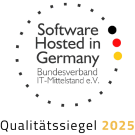FinTech’s Threat Landscape Has Grown Faster Than Its Defenses
The last decade of FinTech innovation was defined by acceleration. Instant payments, seamless onboarding, split-second risk scoring, frictionless commerce — everything revolved around reducing time. Yet while the sector streamlined user experience, another process was unfolding behind the scenes at a pace even faster than the innovation itself: the expansion of the attack surface.
AI as a Force Multiplier for Fraudsters
Artificial intelligence, which has unlocked remarkable possibilities for legitimate innovation, has simultaneously reshaped criminal capability. Deepfake voices now mimic executives with near-perfect accuracy. Synthetic identities pass basic onboarding checks. Automated phishing machines generate language indistinguishable from a human sender and adapt to each target. Attacks once limited to a handful of highly skilled actors have now become products — cheap, automated, infinitely scalable.
Ecosystems Have Outgrown Perimeter-Based Security
Merchants today operate within sprawling digital ecosystems: webshops tied to subscription services, CRM platforms feeding data into ERP systems, mobile apps connected to hosted payment pages, accounting systems communicating with external partners, and a range of plugins stitching it all together. Every integration creates new dependency chains. Every dependency introduces risk. The traditional security perimeter — a single boundary to protect — has dissolved. What remains is an environment made of interconnected parts, each of which shapes overall vulnerability.
Regulation Moves Slowly; Threats Do Not
Regulatory frameworks such as PSD3, DORA, GDPR enforcement, and PCI DSS v4.0 reflect an important truth: resilience is no longer optional. But regulation evolves slowly, and attackers do not wait. A compliance standard written three years ago may not sufficiently address the attack methods emerging tomorrow. This creates a widening gap between formal requirements and real-world threats — a gap that payment providers and merchants must bridge themselves.
The New Meaning of Security in a Decentralized, AI-Driven FinTech World
Security in financial technology has entered a conceptual shift. It no longer describes a protective layer wrapped around a system. It describes the environment in which the system operates. Payments are no longer isolated events; they are journeys across infrastructure, integrations, behavioral signals, and continuous authentication states.
From Static Events to Continuous Verification
Identity has become dynamic. A login credential alone proves nothing if the subsequent behavior contradicts the user’s typical patterns. Device posture, location consistency, interface behavior, and timing signals now play an equal role. A user is authenticated not once, but constantly, as subtle deviations may indicate risk.
From Monolithic Infrastructure to Segmented, Context-Aware Architecture
Modern infrastructures are distributed across cloud services, microservices, interconnected APIs and third-party modules. Instead of defending a single fortress, organizations must defend dozens of doors, each with its own relevance and potential weaknesses. Zero-trust principles — verify everything, assume nothing — become unavoidable in this environment.
From Rules to Adaptation
The pace of threat evolution makes traditional rule-based systems insufficient. Fraud patterns shift too quickly. Signals become too subtle. Detection must become predictive, contextual, and able to identify anomalies that humans cannot. Security becomes an adaptive, learning process — not a fixed configuration.
From Local Protection to Ecosystem Resilience
Trust no longer refers to the safety of a particular transaction or environment. It now encompasses how reliably the entire ecosystem can defend itself under pressure. A merchant evaluating a PSP does not only evaluate the payment gateway; they evaluate the architecture behind it: its integrations, its internal processes, its operational resilience, and its ability to consistently deliver security across every channel.
Novalnet’s Ecosystem-Driven Security Strategy for the Modern Payment Era
Against this backdrop, Novalnet’s security strategy is built on a structural principle: security must permeate every layer of the ecosystem. It is not an add-on, not an afterthought, and not a checkbox — it is the architectural foundation.
Security as Architecture, Not a Feature
Novalnet’s approach begins with the recognition that a payment system is only as secure as its least protected component. The ecosystem — infrastructure, applications, plugins, merchant tools, settlement engines, dispute workflows, and operational protocols — must meet a unified security standard. Any inconsistency becomes a potential attack vector.
A Certification That Reflects Reality
The newly renewed PCI DSS v4.0.1 Level 1 certification is not significant because of the certificate itself, but because of what it covers. Many PSPs certify narrow environments. Very few certify their entire operational ecosystem. Novalnet’s certification spans applications, hardware, multi-tenant infrastructures, hosted payment pages, plugins, subscription and marketplace modules, transaction engines, back-office systems, and internal processes.
For anyone who wants to explore the full scope, details are publicly available.
A Platform Designed for Tomorrow’s Threats
Novalnet’s security model is built to adapt. As attackers evolve their tools, the platform evolves its defenses. As merchants grow more interconnected, the architecture ensures that resilience grows with them. And as regulation continues to tighten, the underlying infrastructure is designed to support compliance rather than strain against it.
The Future of FinTech Will Be Led by Those Who Master Security
The next era of payments will not be defined by who processes faster or who offers the most features, but by who provides the most trustworthy environment. Speed attracts users; security keeps them. Innovation pushes boundaries; resilience sustains them. And in a world where threats are automated and intelligent, the companies that thrive will be those who treat security as a strategic foundation, not an operational burden.
Speak With Our Experts
If your organization is reconsidering how to protect its payment environment — or if you want to understand how a secure ecosystem can enable scalable growth — our experts are ready to help. A conversation with them can illuminate weaknesses, clarify architectural needs, and outline a path toward the level of resilience the future will demand.
You can contact them directly.
Alexander Burba is a Performance Marketing Specialist at Novalnet AG in Munich, where he leads digital acquisition and brand initiatives. With over 7 years of experience in B2B SaaS, FinTech, and IT marketing, Alexander has supported international teams in Germany and Ukraine, serving clients across the EU, US, and global markets. He combines data-driven strategy with cross-functional collaboration to deliver measurable growth for Novalnet and its partners.












